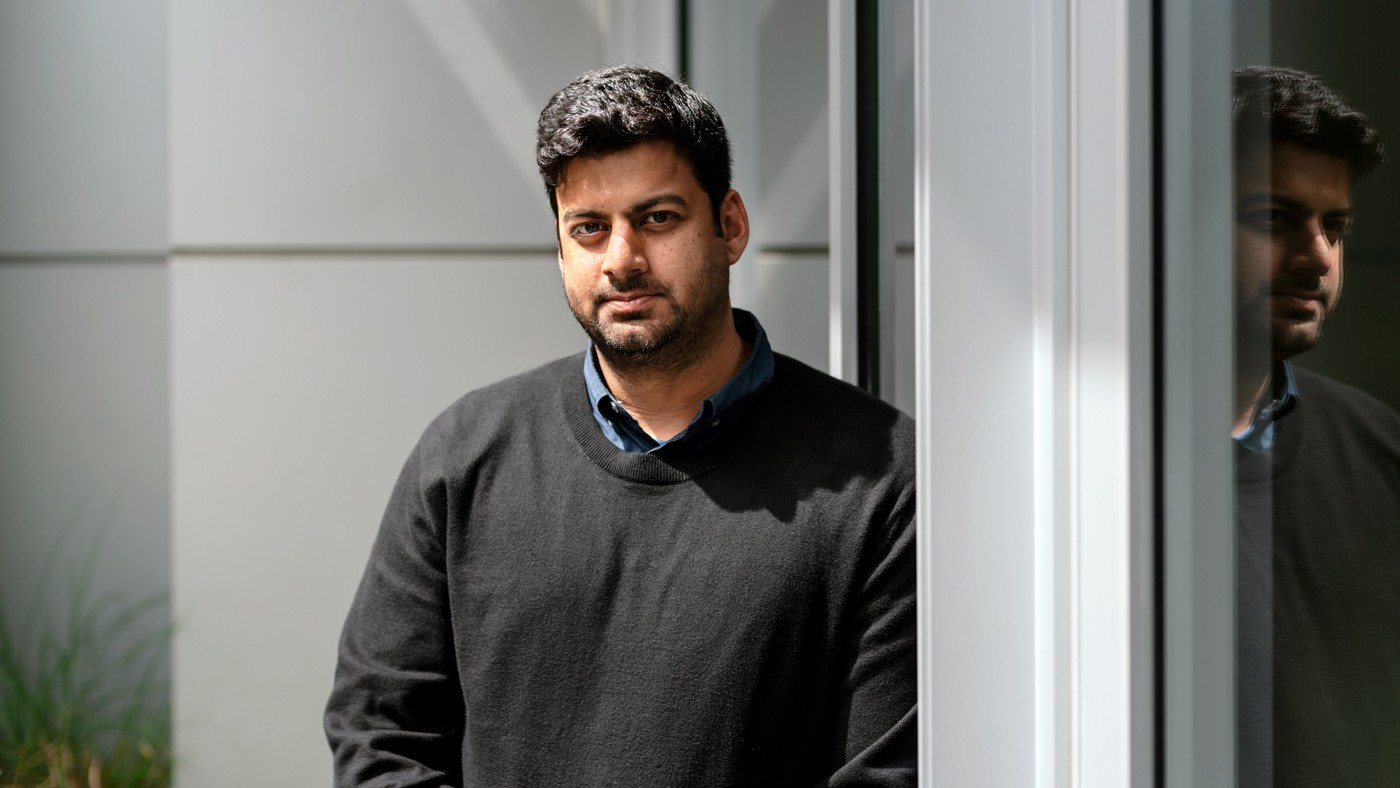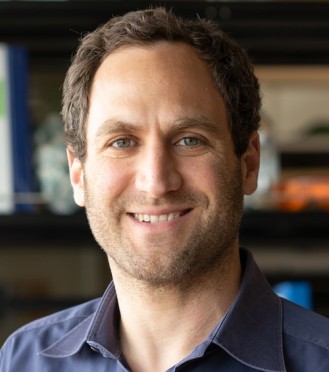Gladstone NOW: The Campaign Join Us on the Journey✕

Ansu Satpathy led a team of researchers at Gladstone and Stanford University that could pave the way toward more effective cancer immunotherapies.
When faced with a formidable foe for months on end, the immune system’s T cells begin to tire. Whether fighting a cancer or a chronic infection, they become less effective over time, a phenomenon dubbed “T cell exhaustion” by scientists. Now, researchers at Gladstone Institutes and Stanford University have revealed the genetic switches that get flipped in exhausted T cells. In the process, they discovered how to prevent this immune exhaustion—a major step toward improving immune-based treatments for cancer.
“The exciting thing about these results is that they give us potential paths forward for boosting the ability of T cells to maintain a long-term fight against cancer cells,” says Alex Marson, MD, PhD, director of the Gladstone-UCSF Institute of Genomic Immunology and an author of the new study published in Cancer Cell.
“Cancer immunotherapies have been transformative for a portion of cancer patients; but the reality is that in a majority, they don’t currently work, often because of T cell exhaustion,” says Ansuman Satpathy, MD, PhD, an assistant professor in the Department of Pathology at the Stanford School of Medicine and a core member of the Gladstone-UCSF Institute of Genomic Immunology, who led the study. “Our work has the potential to change that.”
What Makes T Cells Tire?
The T cells found in the human immune system are some of the front-line soldiers in recognizing, attacking, and directing the fight against foreign cells and molecules. They recognize their opponents—from pathogens to cancers—through unique receptors on their surfaces. When a molecule binds to one of these T cell receptors, it activates the T cell, which begins producing a variety of immune molecules. Scientists have long known, however, that this response diminishes over time. When a T cell receptor is activated continuously for weeks or months, the cell gradually produces fewer immune molecules and becomes less effective at destroying a cancer or pathogen.
“A typical approach would be to study one or two genes at a time, but our strategy enabled us to systematically test every gene in the genome at once.”
In the new study, Satpathy and his collaborators—including Julia Carnevale, MD, a physician-scientist at UC San Francisco (UCSF) and a core member of the Gladstone-UCSF Institute of Genomic Immunology; Santosh Vardhana, MD, PhD, a medical oncologist at Memorial Sloan Kettering Cancer Center; and Crystal Mackall, MD, a professor of pediatrics and of medicine at the Stanford School of Medicine—set out to better characterize what occurs during this shift.
Stanford graduate student Julia Belk, the first author of the new paper, developed a model of T cell exhaustion that could be used to study isolated immune cells in a dish. She showed that constantly activating the receptors of isolated T cells was a good mimic of what occurred in the vicinity of human cancers.
Then, the team used CRISPR-Cas9 gene editing to alter tens of thousands of genes—one at a time—in the cells. They tested which T cells showed more or less exhaustion than usual after constant activation of their T cell receptors. This let the researchers identify which genes were most important in triggering T cell exhaustion.
“This is the first genome-wide screen for the genes that are involved in T cell exhaustion,” says Belk. “A typical approach would be to study one or two genes at a time, but our strategy enabled us to systematically test every gene in the genome at once.”
Pinpointing Master Switches
Researchers long thought that T cell exhaustion might be driven by just a few genes that ended up permanently switched on or off after chronic receptor activation. But in recent years, studies on exhausted T cells began to hint that the cells undergo more major rewiring, with thousands of genes turned on or off.
The genes that Satpathy’s group found to be linked to T cell exhaustion helped support this idea; the most critical genes were epigenetic regulators, which remodel the physical structure of DNA to turn on or off hundreds of genes at once. These findings help explain how completely different an exhausted T cell is from other functional T cell states.
“This study gives us multiple different shots on goal to try to help T cells avoid exhaustion and therefore improve immunotherapies.”
The researchers carried out detailed analyses of the epigenetic regulators identified in their screen to understand how they interacted with each other, and homed in on a few particularly important genes. Then, they used CRISPR/Cas9 gene editing to further study the effects of blocking individual genes in T cells that were delivered into living mice.
They showed that in mice with tumors, blocking the gene Arid1a led to higher levels of T cells and smaller tumors after just 15 days. Moreover, at a molecular level, the T cells from those mice more closely resembled healthy, persistent immune cells than exhausted, less active T cells.
A Path Toward Therapeutics
The researchers say that more work is needed to better understand the effect of altering epigenetic factors like Arid1a in humans with cancer. But their results indicate that altering these genes—or some of the genes that they control—might improve the effectiveness of existing immunotherapies.
“This study gives us multiple different shots on goal to try to help T cells avoid exhaustion and therefore improve immunotherapies,” says Marson.
The findings also could inform the development of treatments to help the immune system ward off chronic viral infections, he adds.
For Media
Julie Langelier
Associate Director, Communications
415.734.5000
Email
About the Study
The paper “Genome-wide CRISPR screens of T cell exhaustion identify chromatin remodeling factors that limit T cell persistence” was published in the journal Cancer Cell on June 23, 2022.
Other authors include Eric Shifrut of Gladstone; Winnie Yao, Nghi Ly, Katherine A. Freitas, Quanming Shi, Alfredo M. Valencia, Kathryn E. Yost, Connor V. Duffy, Bence Daniel, and Zhuang Miao of Stanford; Yan-Ting Chen and Madeline A. Hwee of Memorial Sloan Kettering Cancer Center; and Nupura Kale and Alan Ashworth of UCSF.
The work was supported by the National Institutes of Health (U01CA260852), the Burroughs Wellcome Fund, the Parker Institute for Cancer Immunotherapy, a Pew-Stewart Scholars for Cancer Research Award, the Cancer Research Institute, the Baxter Foundation, the Stanford Innovative Medicine Accelerator and Stanford ChEM-H, the Innovative Genomics Institute, a Stanford Graduate Fellowship, a National Science Foundation Graduate Research Fellowship (DGE-1656518), and a Mentored Clinical Scientist Career Development Award from the National Cancer Institute (K08 CA237731).
About Gladstone Institutes
Gladstone Institutes is an independent, nonprofit life science research organization that uses visionary science and technology to overcome disease. Established in 1979, it is located in the epicenter of biomedical and technological innovation, in the Mission Bay neighborhood of San Francisco. Gladstone has created a research model that disrupts how science is done, funds big ideas, and attracts the brightest minds.
Genomic Maps Untangle the Complex Roots of Disease
Genomic Maps Untangle the Complex Roots of Disease
Findings of the new study in Nature could streamline scientific discovery and accelerate drug development.
News Release Research (Publication) Marson Lab GenomicsSix Gladstone Scientists Named Among World’s Most Highly Cited Researchers
Six Gladstone Scientists Named Among World’s Most Highly Cited Researchers
The featured scientists include global leaders in gene editing, data science, and immunology.
Awards News Release Corces Lab Doudna Lab Marson Lab Pollard Lab Ye LabThe Genome Editing Playbook Is Different in Neurons
The Genome Editing Playbook Is Different in Neurons
The striking findings of a new study could influence how gene therapies are designed for many genetic diseases.
News Release Research (Publication) Neurological Disease Conklin Lab Doudna Lab CRISPR/Gene Editing




